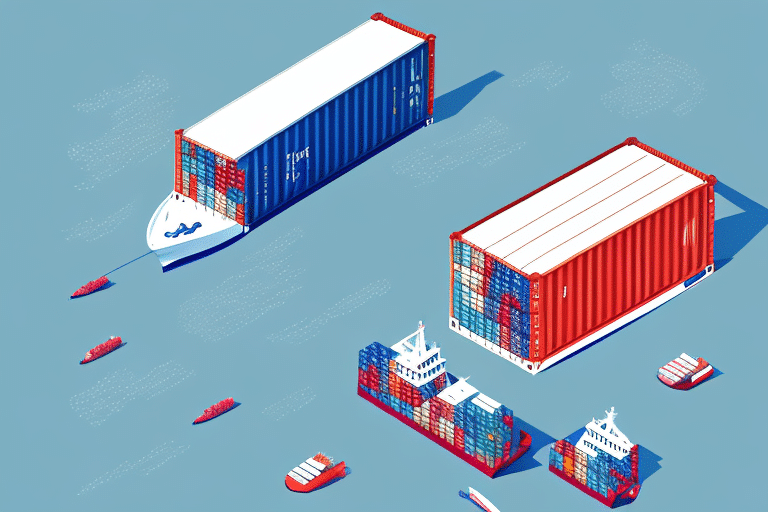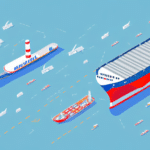What is the Carriage Paid To (CPT) Shipping Term?
The Carriage Paid To (CPT) shipping term is one of the Incoterms® rules established by the International Chamber of Commerce (ICC). Under CPT, the seller is responsible for arranging and paying for the transportation of goods to a specified destination. The risk transfers to the buyer once the goods are handed over to the carrier. This term is versatile and can be used for any mode of transport, including multimodal shipments.
Key Features of CPT Shipping Term
Seller's Responsibilities
- Arrange and pay for transportation to the agreed destination.
- Provide necessary export licenses and documentation.
- Deliver goods to the carrier nominated by the buyer.
Buyer's Responsibilities
- Accept delivery of goods from the carrier.
- Handle import duties, taxes, and customs clearance.
- Arrange insurance, if desired, to cover risks after the goods are handed over to the carrier.
Origin and Evolution of the CPT Shipping Term
The CPT term was introduced in the Incoterms® 2010 edition, replacing the earlier FCA (Free Carrier) term for certain transportation modes. This evolution aimed to clarify responsibilities in an increasingly global and complex trade environment. The Incoterms® are periodically updated, with the latest edition being Incoterms® 2020, to reflect changes in international trade practices.
Cost Calculation in CPT Shipping
Under CPT, the seller covers all costs related to transporting the goods to the specified destination. This includes:
- Freight charges.
- Loading costs.
- Export duties and taxes.
- Insurance (optional, as it's the buyer's responsibility).
It's essential for both parties to clearly outline cost responsibilities in the contract to avoid misunderstandings. According to the International Trade Administration, clear cost delineation can reduce disputes by up to 30% in international transactions.
The Role of Insurance in CPT Contracts
While CPT requires the seller to arrange transportation, it does not mandate insurance coverage. Therefore, the buyer is advised to obtain insurance to cover potential risks after the goods are handed over to the carrier. Factors influencing insurance decisions include the nature of the goods, mode of transport, and the destination's risk profile.
Types of Insurance Coverage
- All-Risk Insurance: Covers a wide range of potential damages or losses.
- Marine Insurance: Specifically for goods transported by sea, covering risks like piracy and natural disasters.
- Air Cargo Insurance: Tailored for goods transported by air, covering risks such as delays and handling damages.
Advantages and Disadvantages of Using CPT
Advantages
- Flexibility: Applicable to any mode of transport, including multimodal shipments.
- Cost Control: Sellers manage and pay for transportation costs up to the agreed destination.
- Simplified Risk Transfer: Clear point of risk transfer reduces ambiguity.
Disadvantages
- Insurance Responsibility: Buyers must arrange their own insurance, potentially increasing complexity.
- Limited Control Over Transportation: Buyers rely on the seller's choice of carrier, which may not always align with their preferences.
- Additional Costs: Buyers may incur unforeseen costs related to unloading and customs clearance.
Common Mistakes to Avoid with CPT Shipping
- Undefined Responsibilities: Failing to clearly specify each party's duties can lead to disputes.
- Assuming Insurance Coverage: Not arranging separate insurance can expose buyers to significant risks.
- Poorly Defined Destination: Vague destination terms can result in increased costs and delays.
- Ignoring Local Regulations: Neglecting to comply with destination country's regulations can cause shipment holds or fines.
Negotiating a Favorable CPT Contract
Effective negotiation ensures that both parties benefit from the CPT arrangement. Consider the following strategies:
- Clear Documentation: Specify all terms, including transportation details, costs, and responsibilities.
- Carrier Selection: Agree on a reliable carrier to minimize transit risks.
- Insurance Clauses: Incorporate terms that require buyers to obtain adequate insurance.
- Contingency Plans: Include provisions for delays or unforeseen events.
Comparison of CPT with Other International Trade Terms
Understanding how CPT differs from other Incoterms® can aid in selecting the most suitable term for your transaction:
| Term | Seller Responsibilities | Buyer Responsibilities |
|---|---|---|
| CPT | Arranges and pays for transport to destination. | Assumes risk after goods are handed to carrier; handles customs and insurance. |
| CIF (Cost, Insurance, and Freight) | Arranges and pays for transport and insurance to port of destination. | Assumes risk after goods are loaded on vessel; handles customs. |
| FOB (Free On Board) | Loads goods onto vessel nominated by buyer. | Assumes all costs and risks post loading; arranges transport and insurance. |
| DDP (Delivered Duty Paid) | Responsible for all costs and risks to deliver goods to buyer's premises. | Minimal responsibilities; primarily accepting delivery. |
Choosing the right term depends on factors like control over transportation, cost distribution, and risk management preferences.
Best Practices for Managing Risk in CPT Transactions
- Comprehensive Contracts: Ensure all terms are explicitly stated and understood by both parties.
- Due Diligence: Research and verify the reliability of chosen carriers.
- Insurance Coverage: Buyers should secure appropriate insurance to mitigate potential losses.
- Regular Communication: Maintain open lines of communication to address issues promptly.
- Monitor Shipments: Utilize tracking technologies to stay informed about shipment status.
Future Trends in Carriage Paid To (CPT) Shipping
The CPT shipping term is evolving alongside advancements in technology and changes in global trade dynamics. Anticipated trends include:
- Digitalization: Increased use of blockchain for transparent and secure transactions.
- Automation: Enhanced automation in logistics to reduce costs and improve efficiency.
- Sustainability: Growing emphasis on eco-friendly shipping practices and compliance with environmental regulations.
- Real-Time Tracking: Advanced tracking systems providing real-time updates and improved supply chain visibility.
- Integration with E-Commerce: Seamless integration of CPT terms with online marketplaces to facilitate smoother transactions.
Conclusion
The Carriage Paid To (CPT) shipping term offers a balanced approach to managing transportation responsibilities and risks in international trade. By clearly defining roles, understanding cost implications, and implementing best practices for risk management, both buyers and sellers can optimize their transactions. Staying informed about industry trends and leveraging technological advancements further enhances the effectiveness of CPT arrangements in a dynamic global marketplace.






















